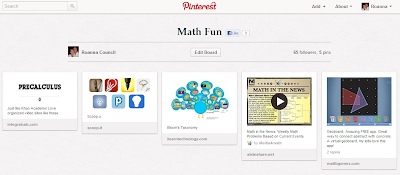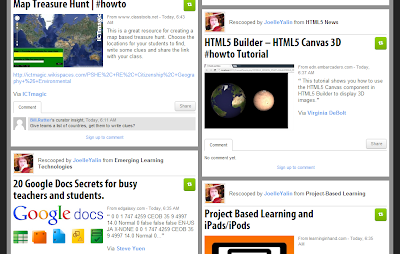Me and My Teaching:
I want to teach high school mathematics, hopefully pre-calculus and calculus to 11th and 12th graders. I still want to be a teacher that students can come to with questions related and unrelated to math. I want to be the fun teacher, the teacher that lets the students get out and do stuff, the teacher would makes their students want to learn more. With my teaching, I hope to incorporate a some-what flipped classroom because since I learned about this concept, I believe that it would add so much to a math course.
My Students and How They will Learn:
I hope that my students are able to be real with me. I hope they can tell me what's up and laugh and cut up with me. I also hope that they will respect me and know when it's time to be serious. I hope they will feel comfortable always coming to me with questions about their work. I never want a student to misbehave just so they can leave class because they don't understand the material. They will learn by hands-on projects, applications, and group work. The focus will be on learning the material and how it relates to their lives rather than can they do 100 problems a night.
Tools that My Students and I will employ:
The learning process that I plan on using is not necessarily traditional, but it is not necessarily technological either. I have learned that technology has it advantaged, though so do pencil and paper. I have to say that I'm on the fence. I'm leaning to the "MESS" system that Florida is implementing though. "Math, Engineering, Science, and Stuff" sounds like the best way to get children involved in something that they don't want to learn. Take a look at my Blog Assignment #5 where I described my ideal learning process under "If I Built a School".
What will my Classroom be Like:
This also could be summed up in my Blog Assignment #5, but I will do it here also. Ideally, I want my classroom to be like a engineering laboratory with stations of students working together to solve every day problems using the math that is described in the standards. When a child gets to the test and sees a picture of a spring, I want them to immediately remember the lab we did using springs to find work and kinetic energy. Math is Science, People!! Do, do, do! I want my students talking and discussing and even debating strategies on how to figure out the volume of a cone by filling it with sand and rice. This is what my classroom will be like....
The Change:
Between the first blog post and the last (above), I wouldn't say that that much has changed. I don't plan on altering the type of teacher that I want to be after this class. I have definitely learned how much a part of education technology has become, but I feel that this class tried to take the focus off of the content area and direct it at the technology. I want to teach because I love the idea of getting to work with students and inspire them to love learning, and I want to teach math because I love math.
I want my focus to be on 2 things and 2 things only: the math standards and whether my students understand the math standards. With the students' understanding or not understanding the standards will be what determines how I teach. If they learn best by technology, then so be it, I'll use the technology approach. As for starting out though, I plan on setting up problem solving interaction for the students to work hands-on. A big thing that this class kept mentioning was group work, project based, and doing homework together in class. This can be done using technology or not. I hope to incorporate technology as best I can to benefit the students' learning but this course didn't teach me what to try. There was no focus on teaching whatsoever.
Final Reflection Video:
I'll start off by saying that it was surprisingly hard to keep this video under 5 minutes. The first take was 7 minutes, then next was 6, and the last was 5. Hope you enjoy!


















